| Architect |
Horace Bradley |
| Date Built |
1926 |
| Location |
Spencer Street |
| Description |
|
The Bath Assembly Hall opened in
1926 as a Palais de Danse, part of a
growing trend of dance halls across the
country. The Hammersmith Palais had
been the first when it opened in London in
1919. This one on Spencer Street in
Leamington was designed by the Birmingham
architect Horace Bradley in the Art Deco
style. The Leamington History
website says that, "Many patrons
went to the Palais at least two
evenings a week and to tea dances at
the weekends. The Old Time dances
regularly attracted over 200
people. The statue on top of the
building originally held a globe which
was illuminated. The inside of the
Palais was lit by a large mirror ball
and it has a specially designed sprung
floor."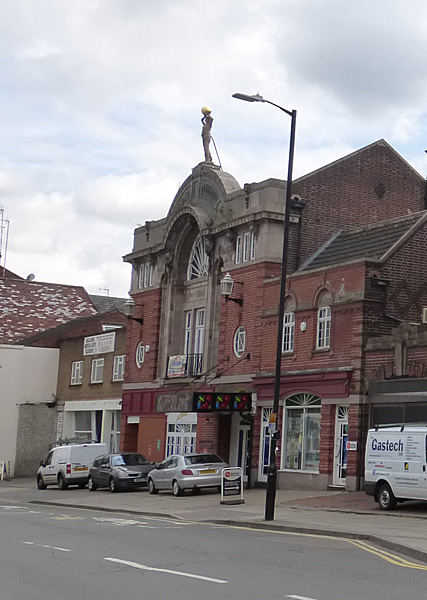 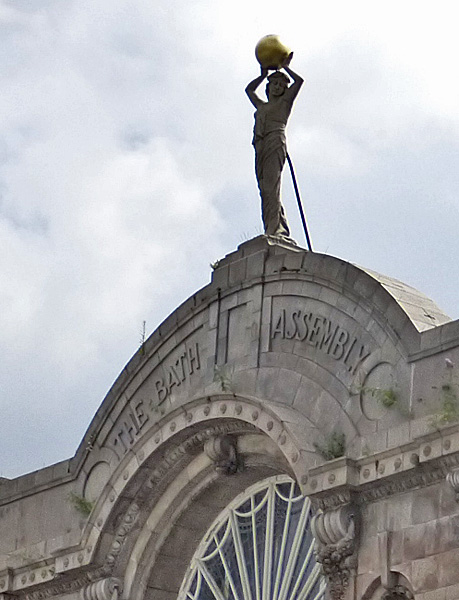 The building is
Grade II Listed and when listed it was
described as featuring, "...
Red Flemish bond brick and stone
with concrete tile roof. Two and
three storey. The two storey dance
hall is at first floor level above
the shop space. .... The entrance
front has a taller, symmetrical
portion of three bays at left
which has a wide, recessed opening
to the ground floor with a fascia
above. .... To the upper levels
there is a prominent architectural
display with an ashlar centrepiece
which has a recessed triple-window
at the centre with a large
fanlight, leading out to a bowed
balcony with metal balustrade. At
either side are tall, shell-headed
niches. Heavy brackets support a
deep cornice which rises in an
arch over the fanlight. Above this
centre portion the parapet is also
arched and has lettering in relief
"THE BATH ASSEMBLY". Below the
fanlight is further lettering in
relief "1927 . HALL . EST". "
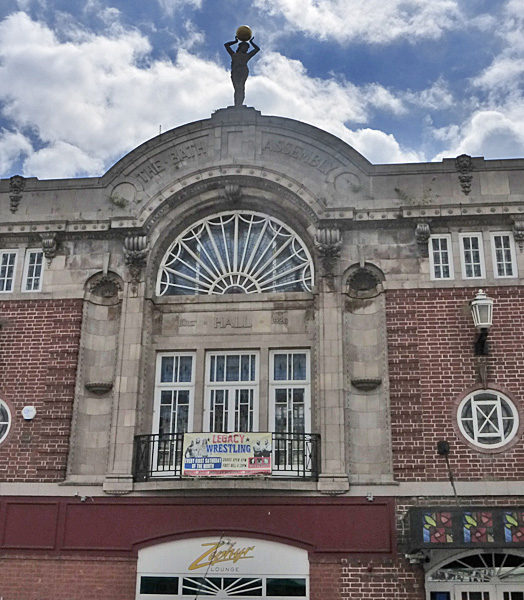 The reason the
building was listed was that, "...
As a building type the
dance hall flourished in the
inter-war period of the C20 and
survived through to the 1950s and
early 1960s. Cultural changes have
meant that the great majority have
been demolished or considerably
altered when adapted for other
purposes. This example, with its
boisterous classical decoration,
expressed inside and out, survives
in a highly intact state. Its
façade mirrors the decorative
style of the interior which has an
integrated and fluid plan."
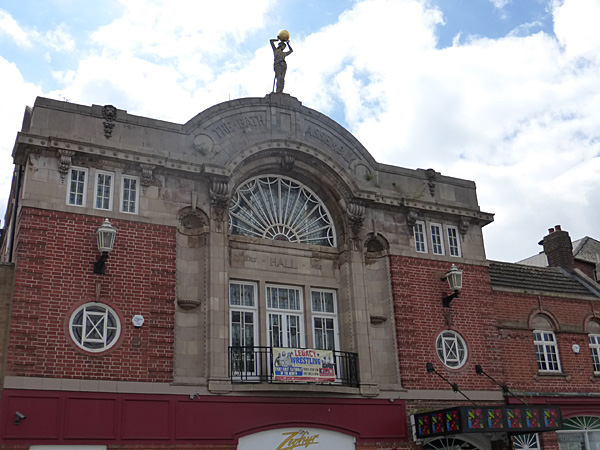 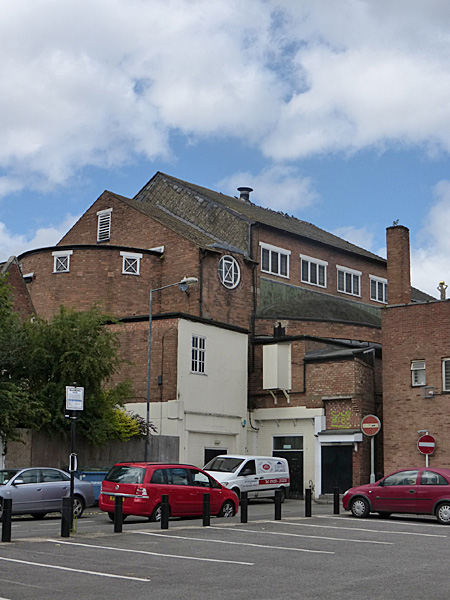 |
|
|
Bath
Assembly Hall, Royal Leamington Spa, UK
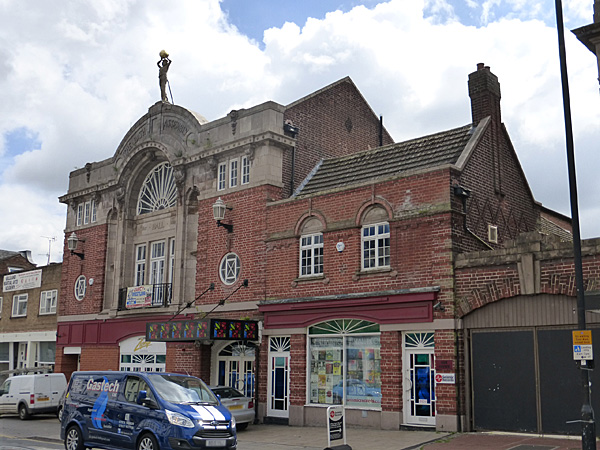 Close Window  |